
|
 |

|
 |
Nava Karanaani: A new series of nritta movements crystallized - V.P. Dhananjayan e-mail: bkalanjali@gmail.com August 11, 2021 The present adavu system we employ in Bharatanatyam is totally different from the original Naatyasastra Karanas, except for a few postures which resemble a few of the karanas of Bharata's Naatyasastra. I want to document the changes over the centuries from what is contained in the Naatyasastra, thereby creating a record of the karanas that are currently in use. This will be helpful to people graduating from various schools and institutions as it will bridge the gap between the theory in the Naatyasastra and the current practice of Bharatanatyam. The Naatyasastra is the most important text of dramaturgy that Bhaarat has ever produced. Written by Sage Bharatha (between 500 BC to 300 AD), it serves as a comprehensive guide, extensively covering all aspects of theatre. Though the title literally means 'Science of Theatre,' the Naatyasastra contains fundamental facts about all our art forms. In 6,000 Samskritam slokas under 36 chapters, Naatyasastra covers all aspects of theatre and other art forms, beginning with origin of theatre, acting, costuming, make-up, properties, dance, music, poetic composition, play construction, grammar, audiences, rituals, and the architecture of theatre. There has been no concerted effort to update this treatise with the changes and evolution of the arts over the past several centuries. While scholars and artistes have made commentaries and translated the text into other languages, no one has extended the theories contained in the Naatyasastra to include the insights of later generations. Scholars and artistes familiar with the studies of Naatyasastra Karanas are able to see in the current presentations of Bharatanatyam that the adavu system has come far away from the original text. The present day practical nritta patterns are basically akin to the 'dasa mandala' (the ten basic postures prescribed in the Abhinaya Darpana). Therefore, I believe that it is time we consider creating another set of 108 or more karanas following the norms of Naatyasastra both with a Samskritam text and sculptures of them for posterity. There is no other work like this, so it will be a monumental work of lasting value. As said in the Naatyasastra of Bharatamuni: Bhavishyatascha lokascha sarva karmaanu sadhakam 'For the coming generations to be benefited.' This is intended as the sequel to the Naatyasastra which will provide a more complete history of Bhaarateeya Classical Theatre as it has evolved till today, using the following types of media:
This text of my article was submitted for a senior Fellowship of Government India, Ministry of Culture. Unfortunately they have not accepted this unique project. Now I have to find other sources to fund this monumental project. If this does not happen in my lifetime, future research scholars could take it up for coming generations to benefit. 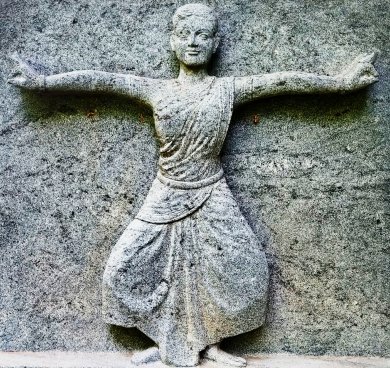 I have selected sets of adavus (practical basic exercises) to be photographed and made into sculptures. One such sample is already installed in our Bharatakalanjali campus. The project will be assembled in the following ways:
Will engage Samskritam scholars to write couplets in the same meters as Bharata's Naatyasastra defining each karana. Then the English translation of those couplets will be written. Photographs will be taken of a dancer showing the position and a video too. 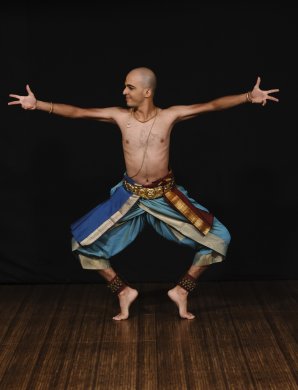
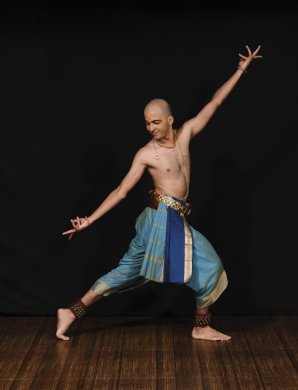
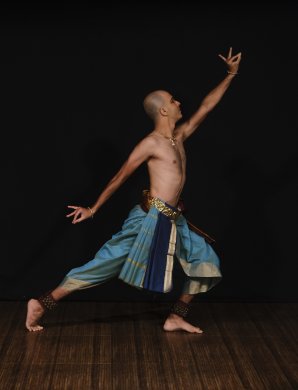
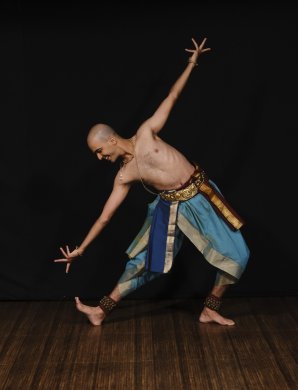
Sanat Kumar
Once that is ready, we can look into the possibility of sculpting all the new karanas and new hand gestures created for contemporary objects (modern objects such as airplane, ships, submarine, rocket, and several other animal and human characters not found in the ancient treatise) engaging traditional granite sculptors (Sthapathis). As said in the Naatyasastra of Bhartamuni: Aakrityaa cheshtayaa chinnai , jaatyaa vigjaaya vastutaha swayam vitarkya karthavyam, hasthaabhinayam budhaihi Intelligent Naatyaacharya can evolve new hand gestures according to the forms, gaits, behaviour, and character of objects from time to time in a suitable manner. Using this freedom given to create within the parameters of aesthetic and tradition, I will add new 'mudras' which will be useful for the coming generations to create naatya productions of contemporary stories and historic events. Making such rock cut sculptures in panels will cost heavily. For example, the model sculpture in the size of 24 x 24 inches (see picture of sample model) now costs Rs.50 to 60,000 for each panel. So depending upon the number of panels the cost will be calculated. I make an appeal to all philanthropists, practitioners of Bharatanaatyam and its connoisseurs to contribute towards project funding. If any art supporting Foundations are interested in taking over this great project, I offer my expertise / ideas for the project details for free.  Naatyacharya V.P.Dhananjayan is the Founder/President of Bharata Kalanjali, Chennai. Post your comments Pl provide your name and email id along with your comment. All appropriate comments posted with name & email id in the blog will also be featured in the site. |